
Posted on 02/19/2015 4:14:44 AM PST by Homer_J_Simpson

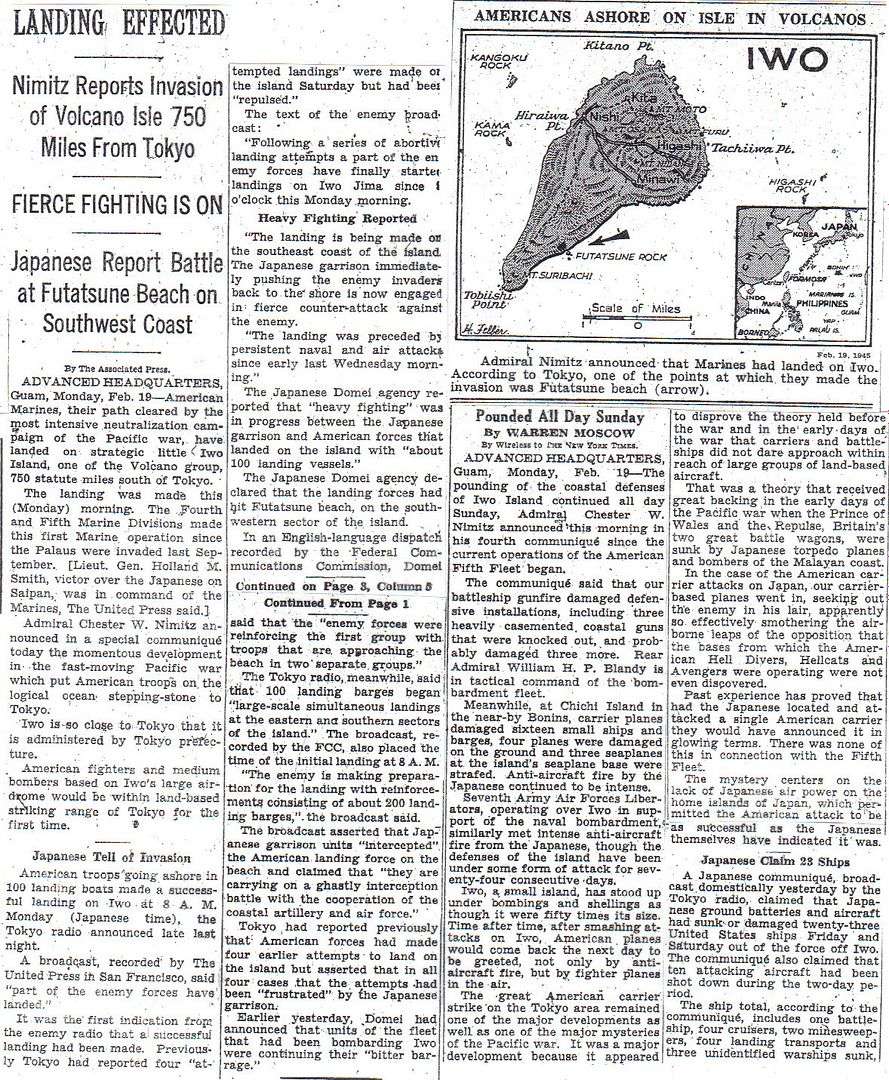
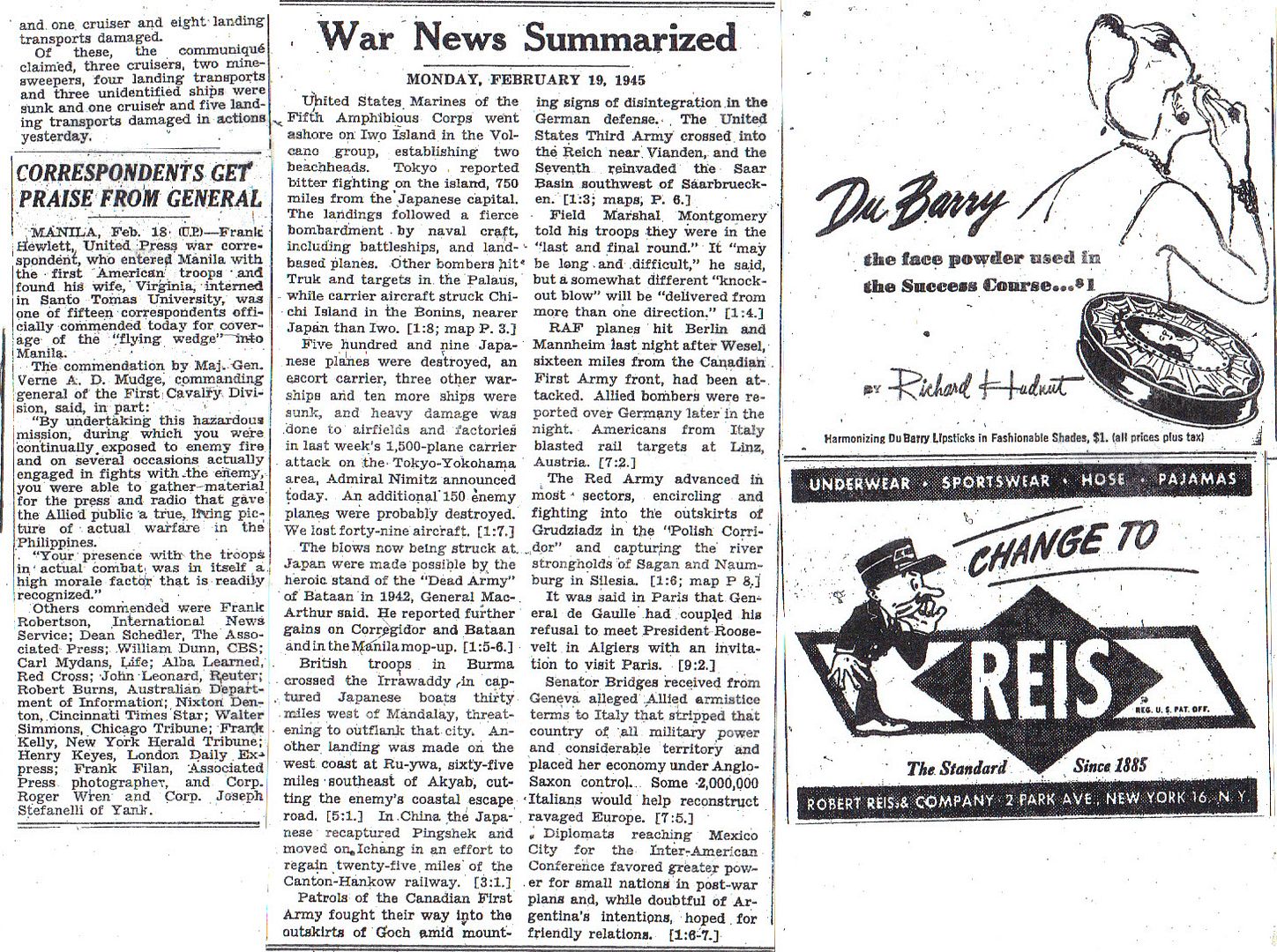

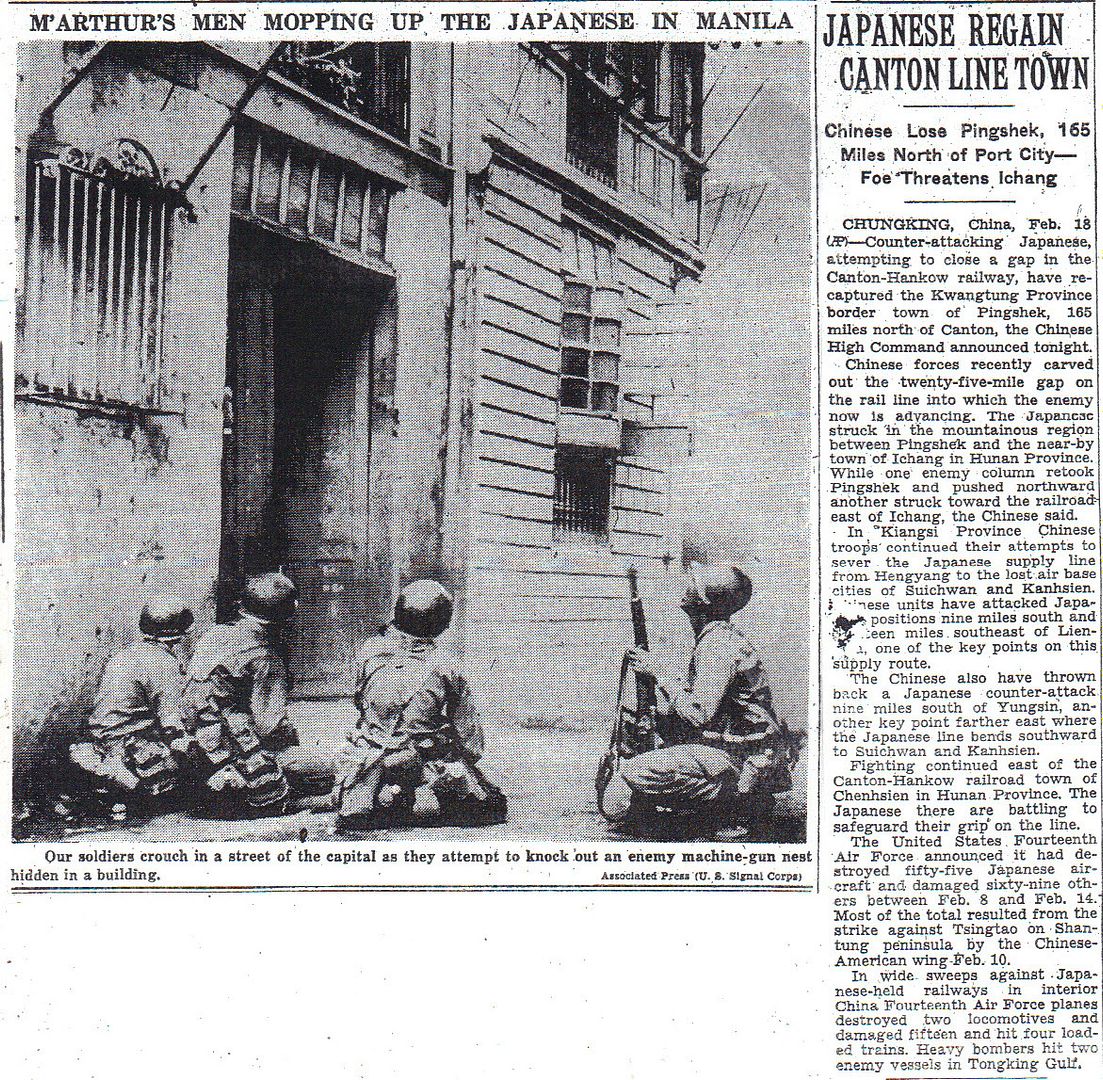
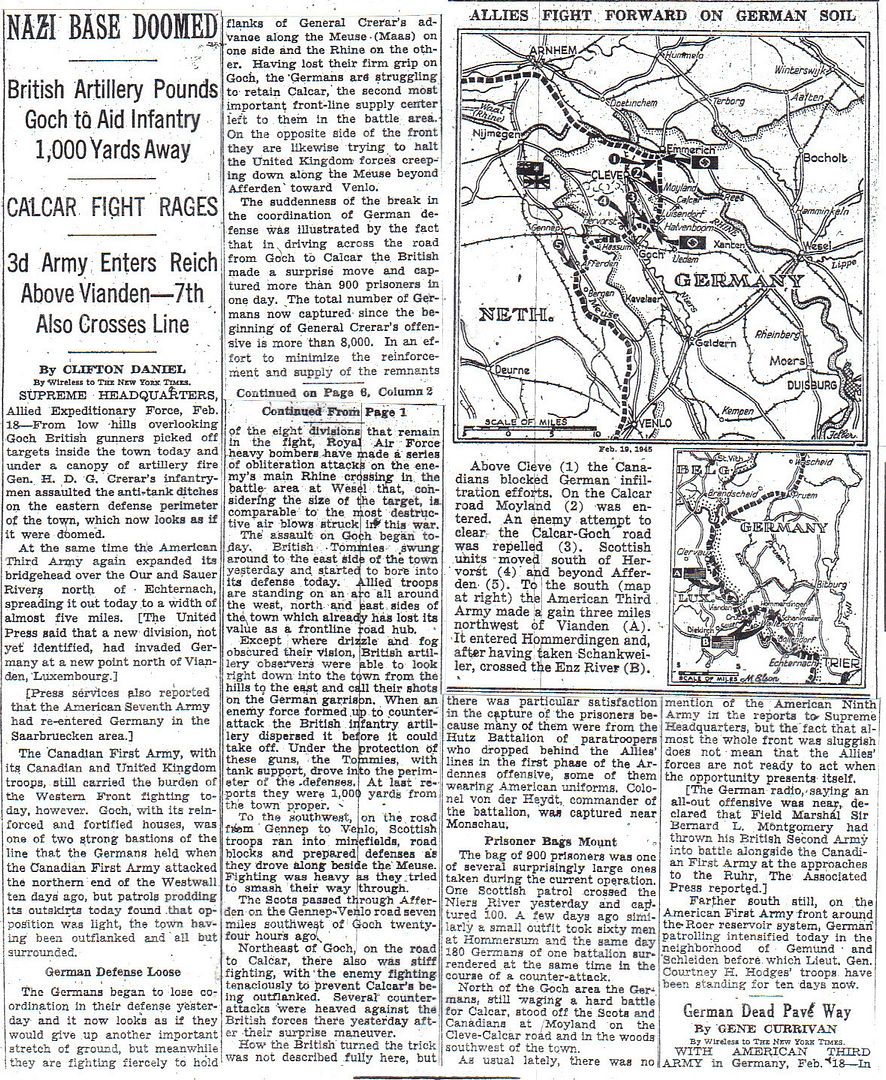
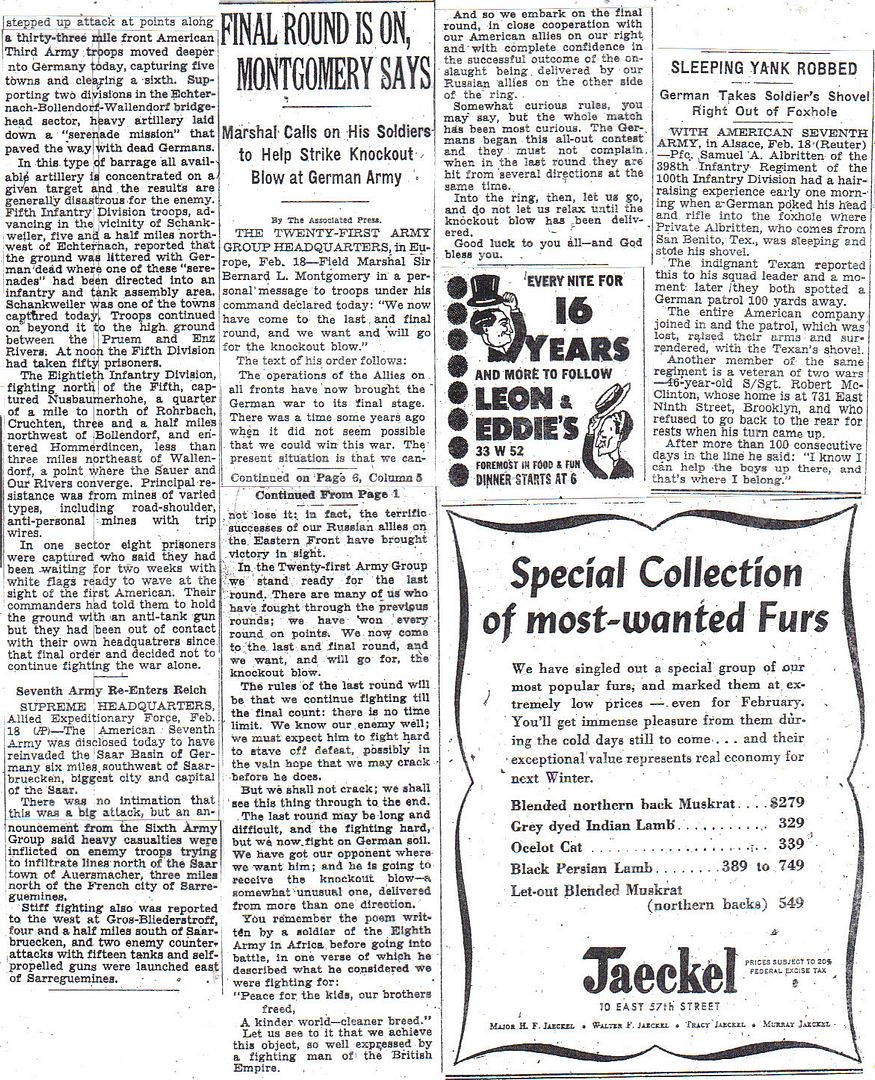
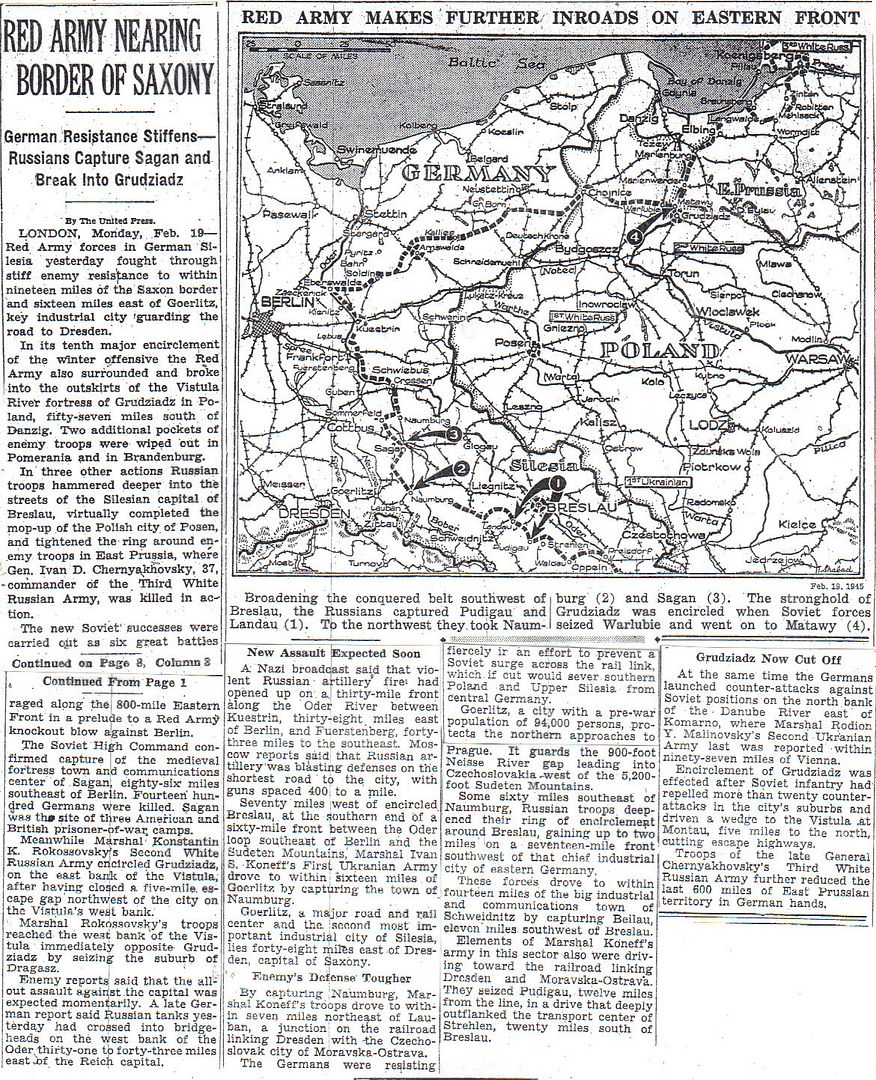
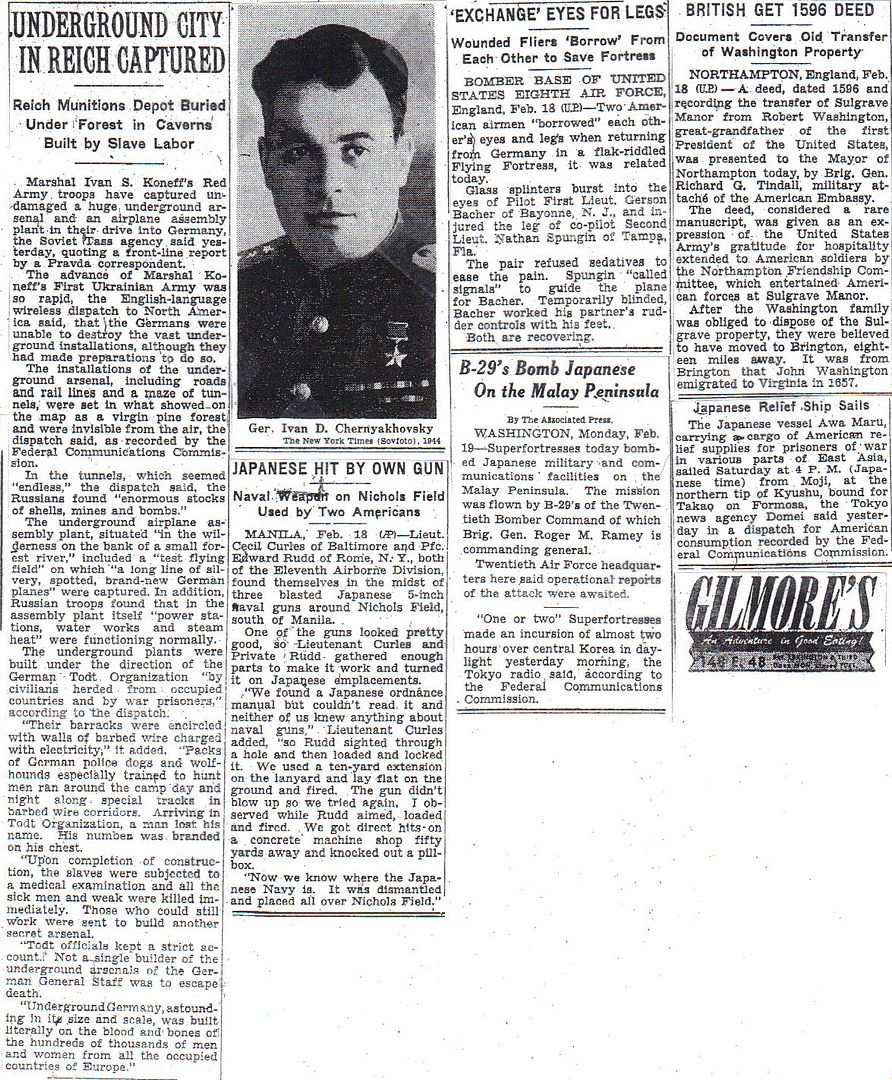
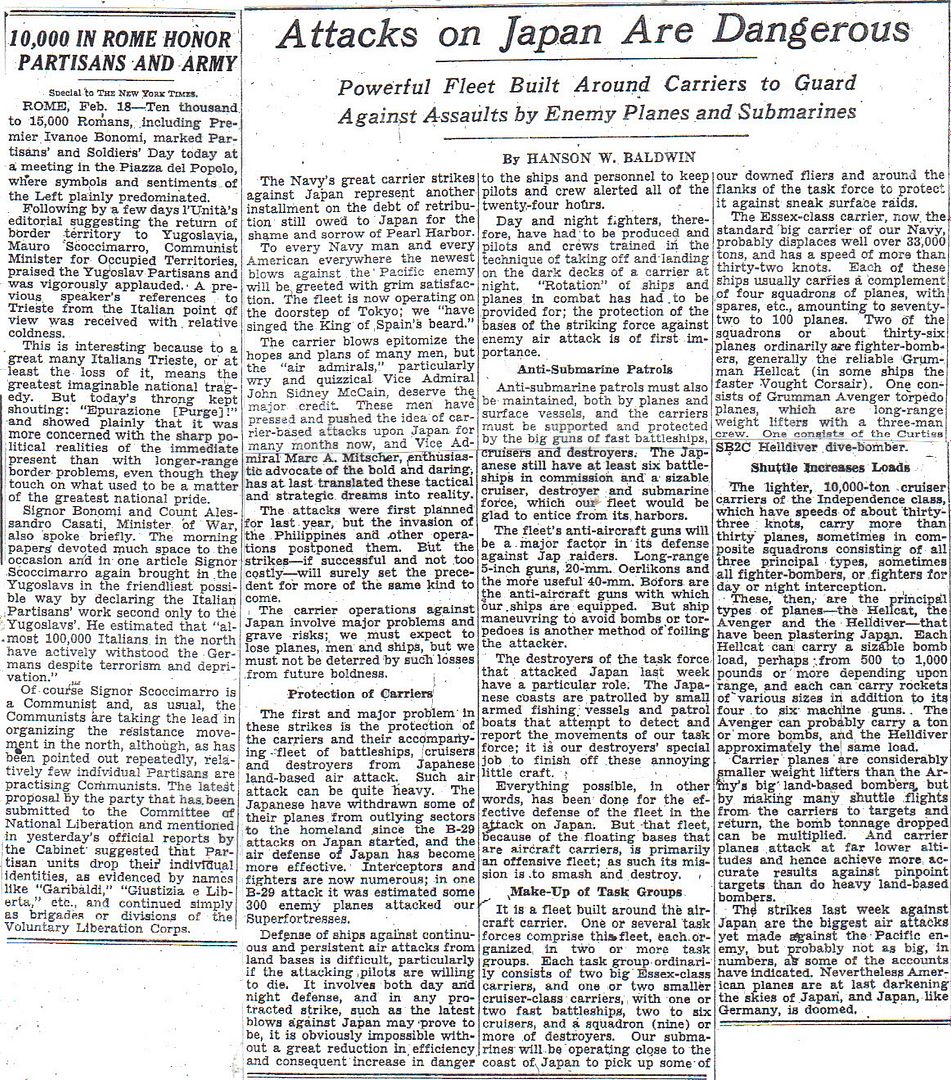
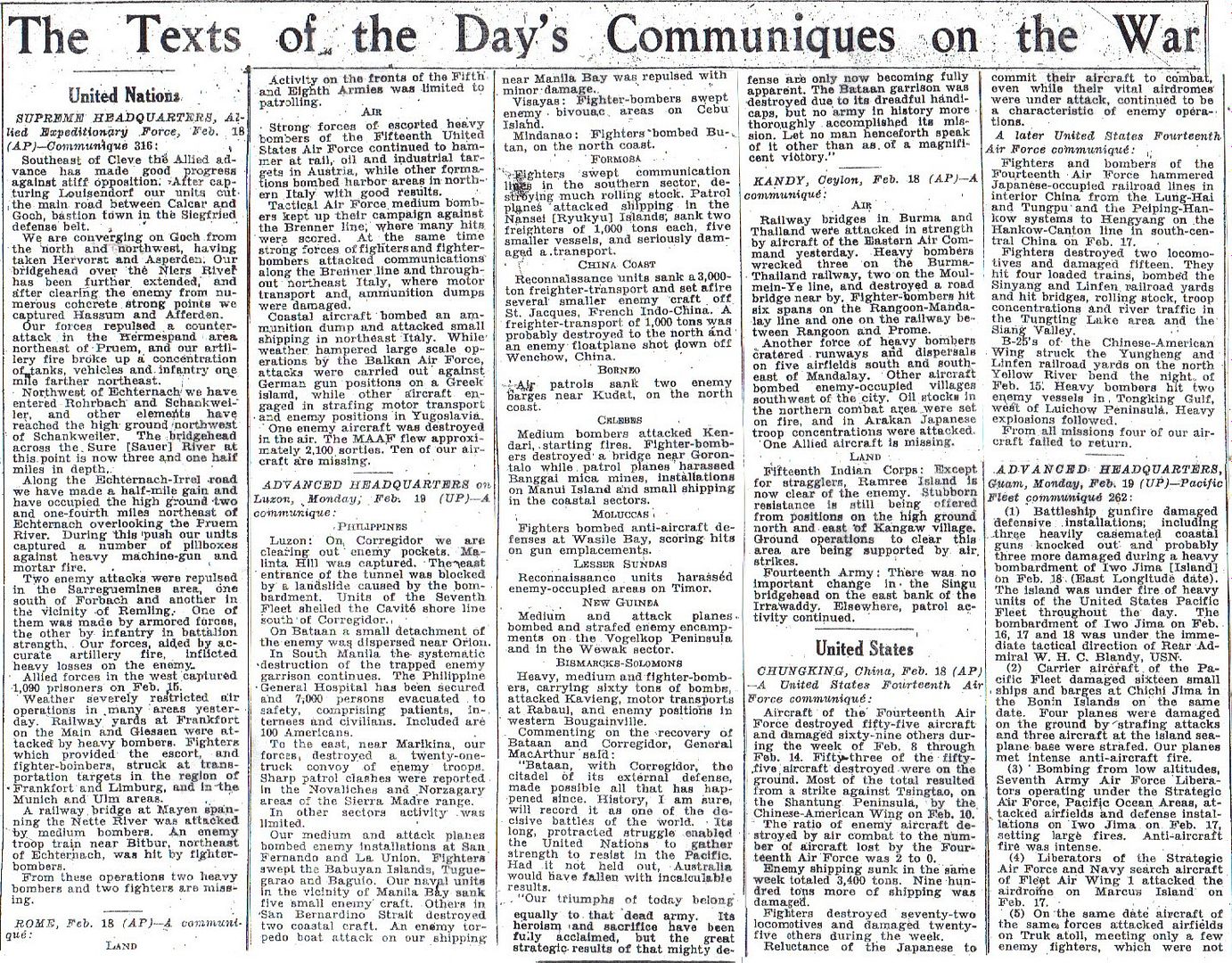

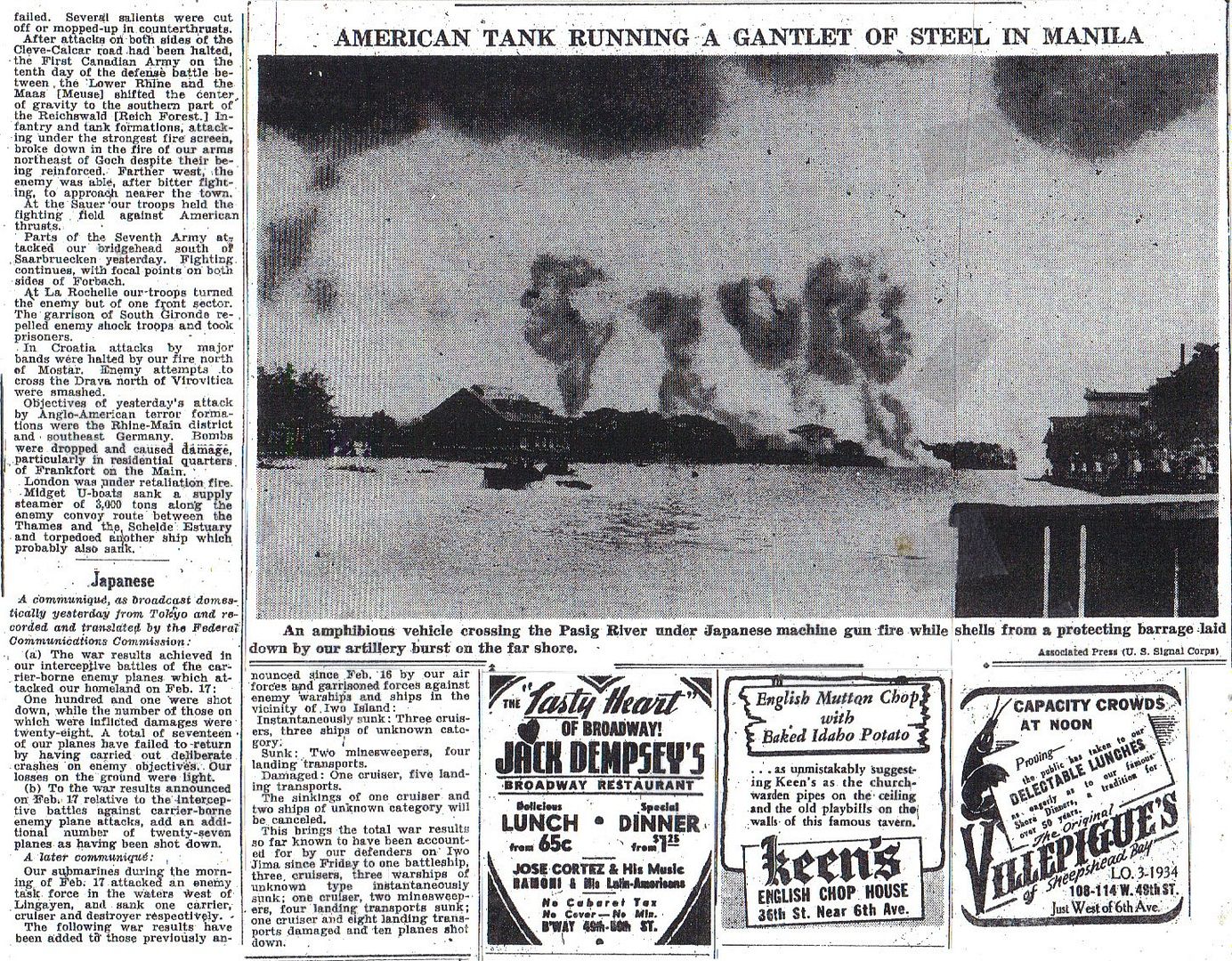
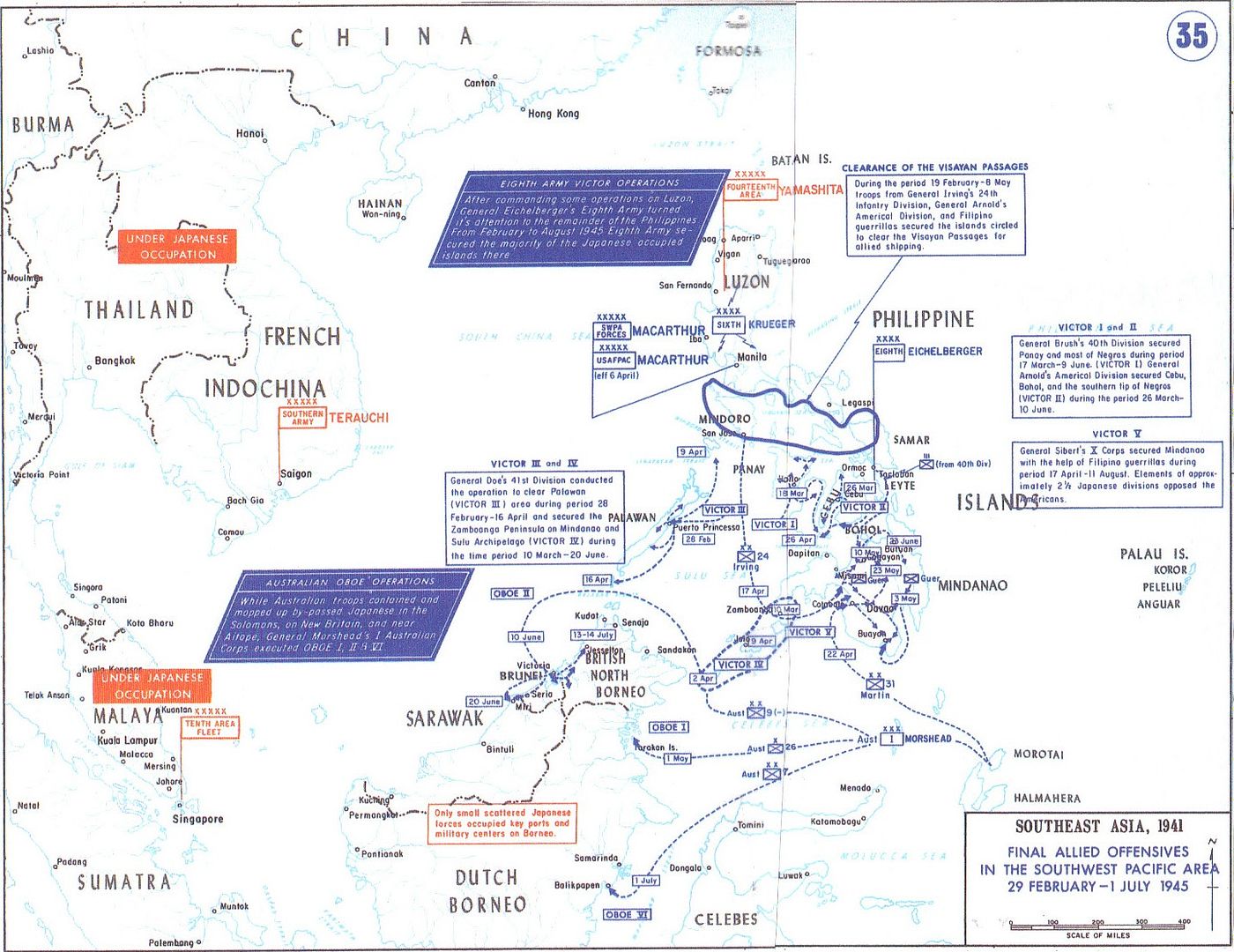
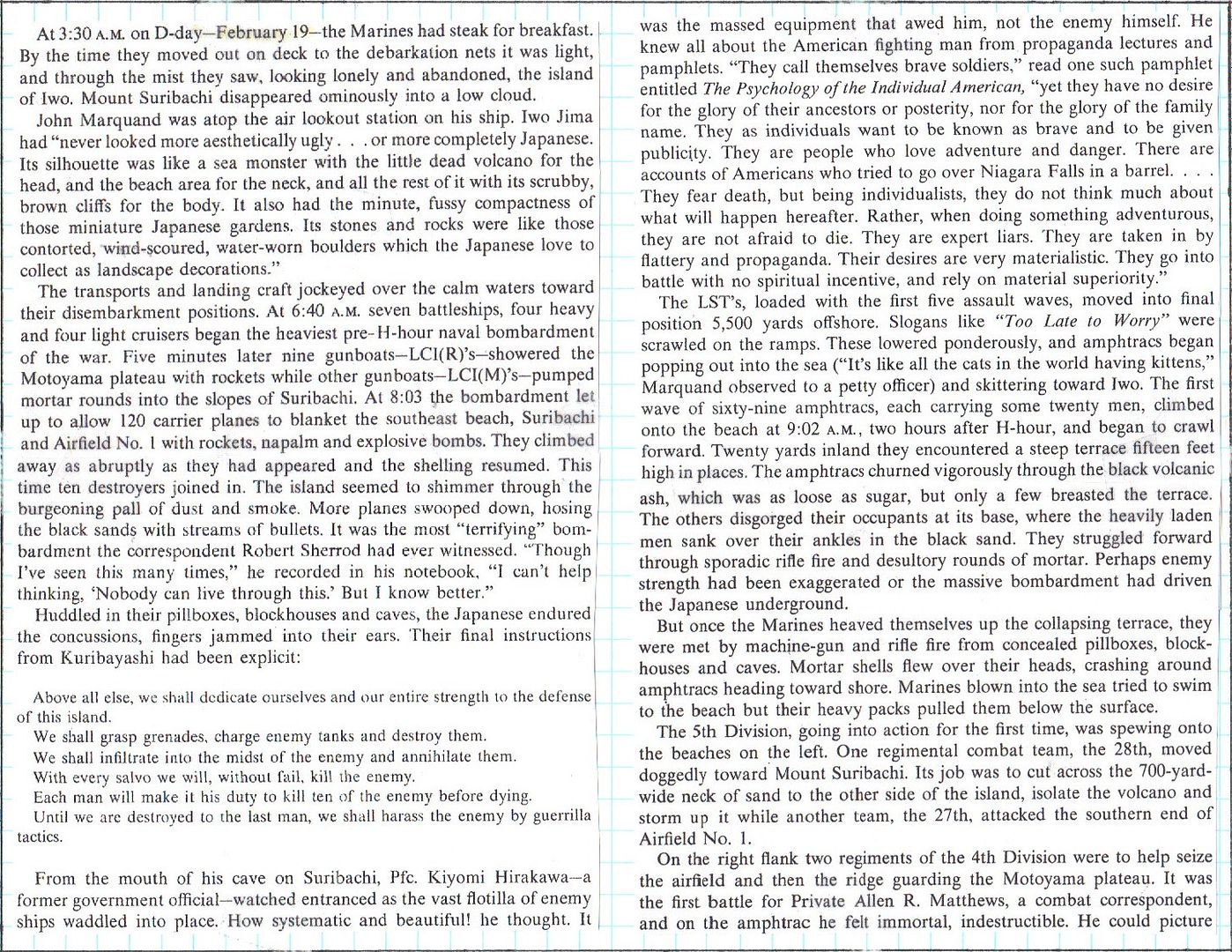
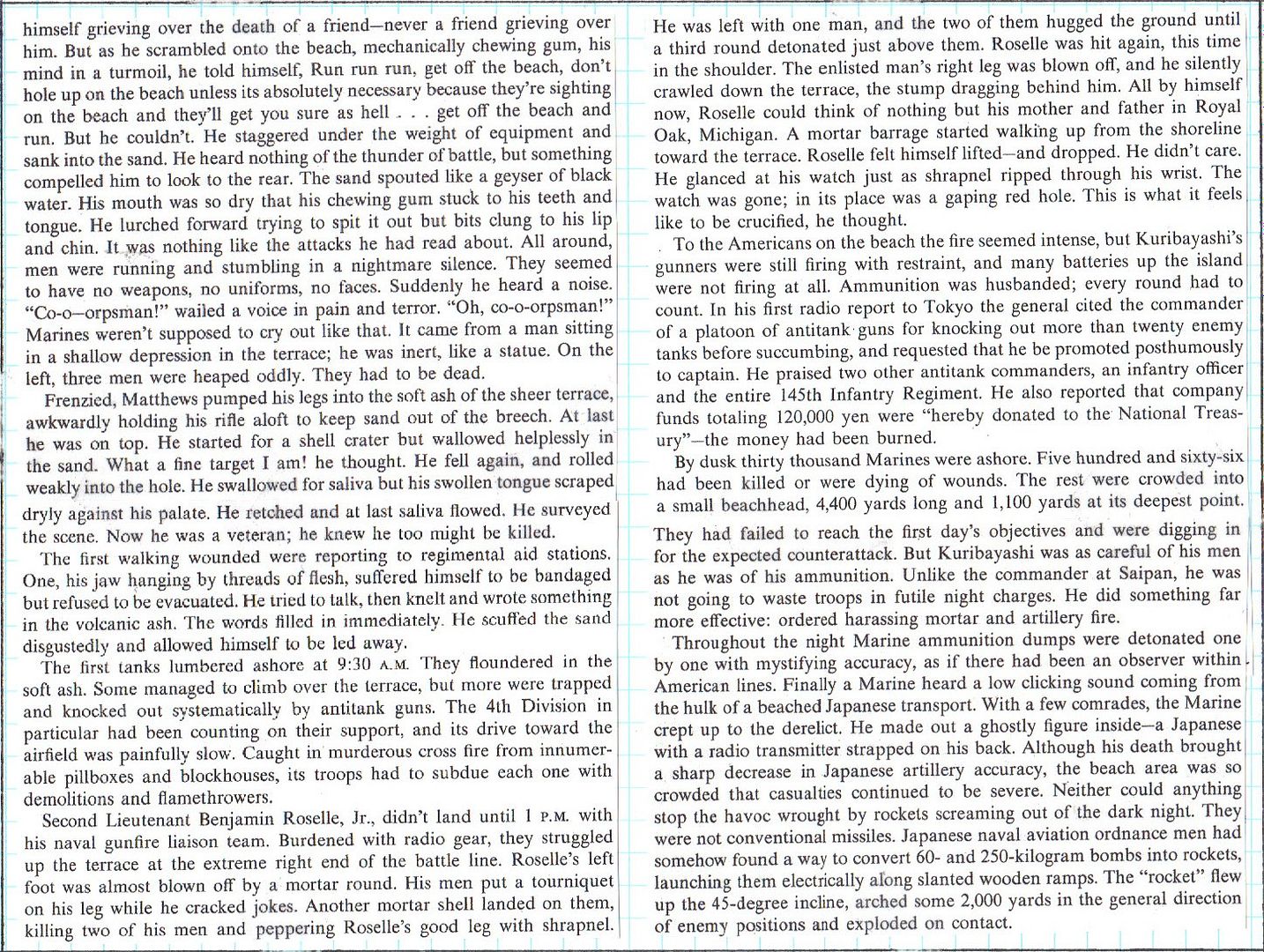
John Toland, The Rising Sun: The Decline and Fall of the Japanese Empire, 1936-1945
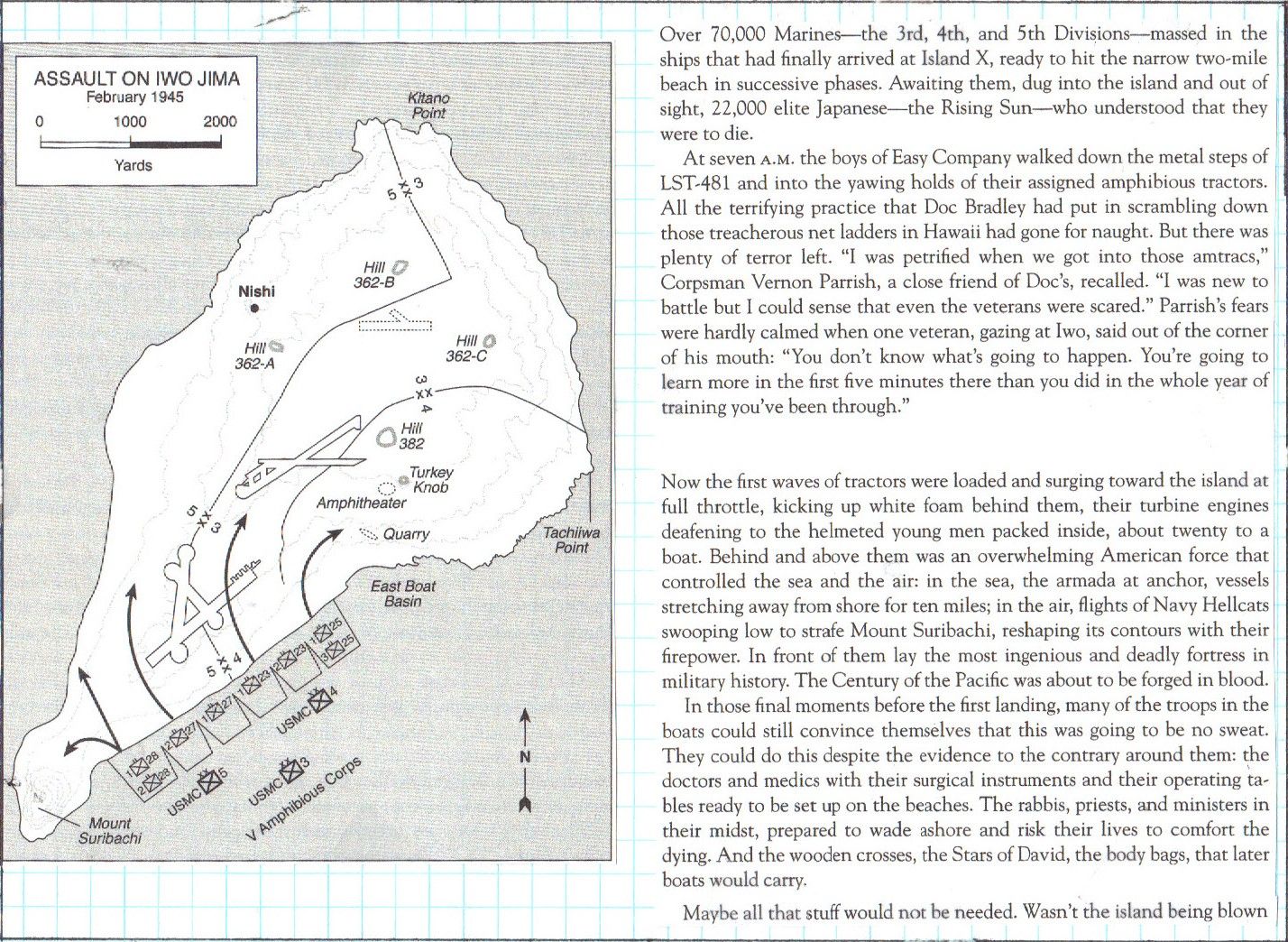

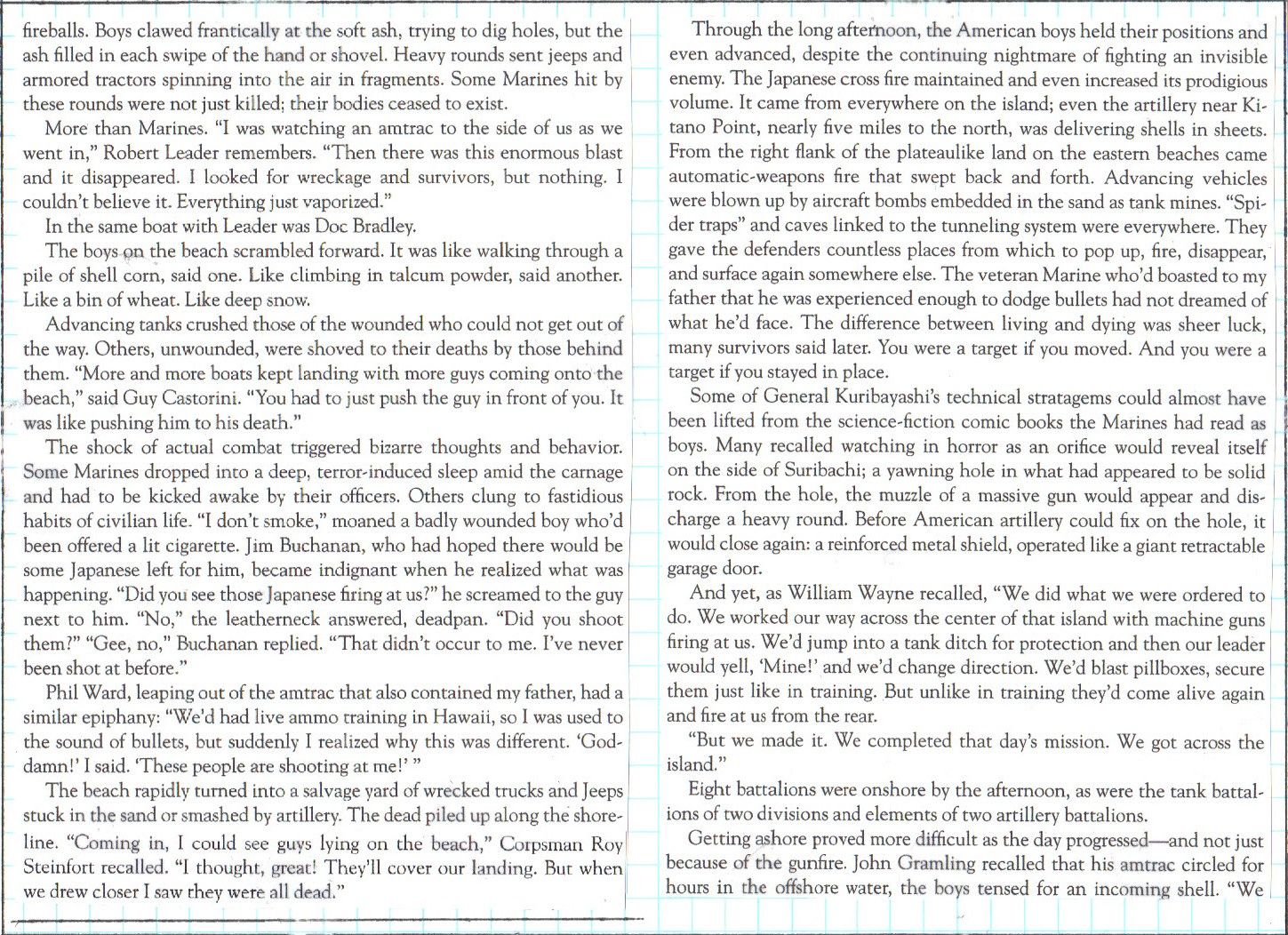
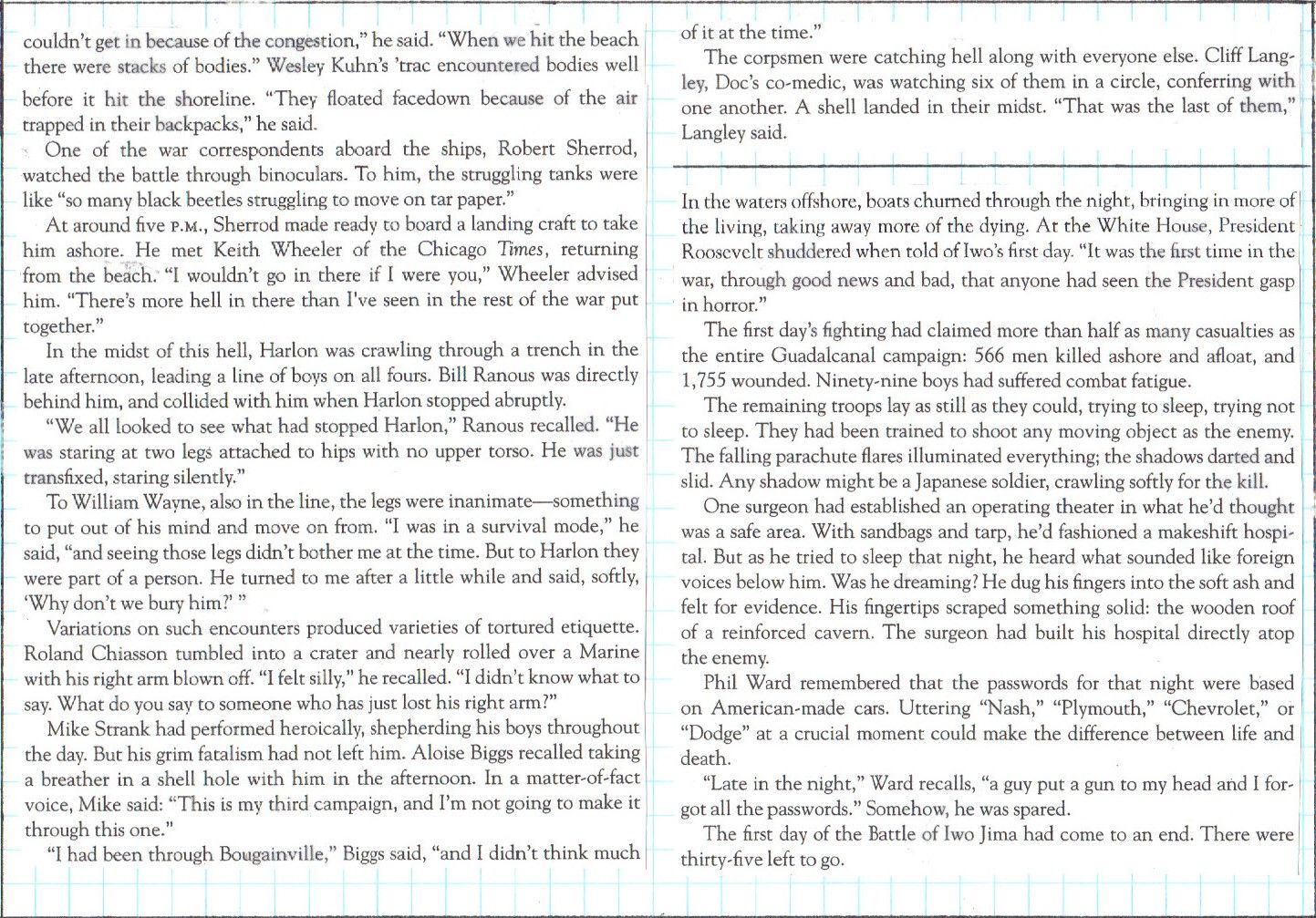
http://www.etherit.co.uk/month/1/19.htm
February 19th, 1945 (MONDAY)
UNITED KINGDOM: The Eighth Air Force flies Mission 835 against targets in Germany from bases in England: 1,135 bombers and 560 fighters in seven forces are dispatched to hit oil, industrial and rail targets; they claim 3-0-0 Luftwaffe aircraft; 1 B-24 and 7 P-51s are lost:
- 196 B-17s are sent to hit the marshalling yard at Osnabruck (155); 24 hit the secondary target, the marshalling yard at Munster; 10 hit Haselunne, a target of opportunity; Micro-H and H2X are used; escorting are 38 P-51s.
- 291 B-24s are dispatched to hit military vehicle plants at Meschede (97) and Jungenthal (86) and the marshalling yard at Siegen (94) using Gee-H; a B-24 is lost; 122 P-47s and P-51s escort.
- 422 B-17s are sent to hit benzol plants at Bochum (99) and Gelsenkirchen (36), oil refineries at Dortmund (74) and Alm (37) using Micro H and H2X; 162 hit the secondary target, the Munster marshalling yard (162) visually; 91 P-51s escort.
- 131 B-17s hit the marshalling yard at Rheine with Micro H without loss. 48 P-51s escort.
- 68 B-17s hit the rail bridge at Wesel using Micro H; 32 P-51s escort.
- 163 P-51s fly a fighter sweep against rail and road targets in the Hannover-Magdeburg-Brunswick area claiming 2-0-0 aircraft in the air and 1-0-0 on the ground; 5 P-51s are lost.
- 27 of 28 P-51s fly a scouting mission; 1 is lost.
GERMANY: Himmler meets Count Folke Bernadotte, an official of the Red Cross, and makes overtures for peace talks with the west.
The Ninth Air Force dispatches B-26s, A-26s, and A-20s to attack targets in Germany, i.e., the Mechernich prime mover depot, rail bridges at Pracht, Niederscheld, and Neuwied-Irlich, the Wiesbaden ordnance depot, and 4 targets of opportunity; fighters escort the bombers, attack railroads and bridges, fly armed reconnaissance and alerts, and cooperate with the VIII, XII, and XX Corps east of the Our River, between the Westwall and the Prum River, and in the Saar-Mosel triangle.
U-2546 launched.
NORWAY: U-1003 sailed from Bergen on her second and final patrol.
BALTIC SEA: U-676 sunk in the Gulf of Finland, position unknown, by a USSR mine. 57 dead (all hands lost).
AUSTRIA: 51 P-51s strafe rail and river traffic and airfields between Linz and Vienna and in the Graz area; other P-51s and P-38s fly escort and reconnaissance missions.
ITALY: The Fifteenth Air Force attacks targets in central Europe from their bases in ITALY: during the night of 18/19 February, 11 B-24s drop supplies in northern Italy. In Austria during the day almost 500 B-24s and B-17s, escorted by about 220 P-51s and P-38s, bomb 2 marshalling yards and the southern station area in Vienna, marshalling yards at Klagenfurt, Graz, and Bruck an der Mur; marshalling yards at Maribor, Yugoslavia; shipyards in Fiume, Italy; and the Pula, Yugoslavia harbor and military installations.
The Twelfth Air Force in Italy, is grounded by bad weather although some aircraft radar bomb communications and dumps in the western Po Valley and northeastern Italy, and claim several rail line cuts in the Brenner area.
BURMA: 24 Tenth Air Force B-25s and 31 P-47 Thunderbolts fly close support strikes in the Mongmit-Myitson area; 70+ fighter-bombers hit troop concentrations, supplies, and villages behind the battleline in central Burma. Heavy transport operations continue.
CHINA: 14 Fourteenth Air Force P-51s and P-40s attack rail and river traffic at Chiuchiang, Hsuchang, Lung Hai, and Tsinpu.
FORMOSA: Far East Air Forces B-24s bomb Koshun, Heito, and Takao Airfields and B-25s and fighters on sweeps attack a large number of targets of opportunity including trains, parked aircraft, buildings, and coastal vessels.
JAPAN: The XXI Bomber Command flies Mission 37 from bases in the Mariana Islands: 150 B-29 Superfortresses are dispatched to hit the Musashino aircraft plant in Tokyo hoping to draw air reinforcements away from the Iwo Jima invasion; thick clouds completely cover the primary target so 119 bomb the port and urban area of Tokyo; 12 others hit targets of last resort and targets of opportunity; they claim 39-16-37 Japanese aircraft; 6 B-29s are lost.
Six Eleventh Air Force B-24s fly a photo reconnaissance over Shimushu Island and bomb Kurabu Cape Airfield on Paramushiru Island in the Kurile Islands; 6 Japanese fighters intercept; the B-24s claim 4 damaged.
MALAYA: The XX Bomber Command flies Mission 37 from bases in India: 49 of 59 B-29s bomb the Central Railroad Repair Shops at Kuala Lumpur, some bombing from only 1,000 feet (305 meters); 4 other B-29s hit alternate targets, the Alor Star Airfield, and the marshalling yard at Martaban, Burma; they claim 1-0-7 Japanese aircraft; no B-29s are lost.
VOLCANO ISLANDS: Landings begin on Iwo Jima by the Fourth and Fifth US Marine Divisions.
The day dawns clear. Task Force 58, its Tokyo strikes completed, comes in for the assault and two of its battleships and 13 cruisers join in the neutralization fire as Marines shifted from transports into the landing craft.
Starting at 0640 hours, seven battleships and various other warships lay down the heaviest pre-landing bombardment of WWII. Flying artillery spotting missions are Eastern Aircraft FM Wildcats and TBM Avengers of Composite Spotting Squadron One (VOC-1) in USS Wake Island (CVE-65). Also bombing the area are B-24 Liberators of the Seventh Air Force’s VII Bomber Command; 44 aircraft are dispatched but due to thick cloud cover, only 14 find targets and release their bomb loads.
Between H minus 1 and H-hour (0800 to 0900), while the amphibious tractors manoeuvred into position, the warships laid down a barrage. Between 0805 and 0815 hours, 24 F4U Corsairs of Marine Fighting Squadron One Hundred Twenty Four (VMF-124) and 24 F4F Hellcats of Fighting Squadron Four (VF-4) in USS Essex (CV-9), mount low-level strafing and rocket attacks on the beaches supporting the V Marine Amphibious Corps which lands at 0900 hours. A strike by 44 B-24s had been scheduled, but when over half of them aborted, only 15 arrived to drop 19 tons of 100-pound GP’s on the island’s eastern defences.
The first wave of US Marines hit the beaches northeast of Mount Suribachi and under the US Navy’s barrage move inland about 200 yards on a 1,500 yard front. By evening 30,000 Marines were ashore: the 5th Division had pushed almost across the island at its narrowest point, just north of Suribachi, but the 4th, against very heavy opposition, had been stopped at the edge of Montoyama Airfield No. 1.
During the day, aircraft from Task Groups 58.2 (Hancock, Lexington and San Jacinto) and 58.3 (Bunker Hill, Essex and Cowpens) fly 602 sorties supporting the Marines. Aircraft from the escort aircraft carriers, Task Group 52.2 support the Marines by flying several hundred sorties against Iwo Jima and Chichi Jima.
Between 1900 and 2130 hours, several Japanese bombers based in Japan attacked the US ships. A Night Fighting Squadron Ninety [VF(N)-90] pilot in a Hellcat downs a Nakajima Ki-49 Army Type 100 Heavy Bomber Donryu (Storm Dragon), Allied Code Name “Helen,” 20 miles (32 km) from TF 58 at 1926 hours and ship AA fire downs two others.
COMMONWEALTH OF THE PHILIPPINES: US Army troops covered by USMC aircraft are landed on the northwest coast of Samar and on Capul Island to insure control of San Bernardino Strait.
The Seventh Air Force dispatches 26 B-24s from Angaur Island in the Palau Islands to bomb Likanan Airfield on Mindanao Island.
In the central Philippines, USMC F4U Corsairs under the tactical command of the Thirteenth Air Force fly napalm strikes against airfields and other targets.
On Luzon, Far East Air Forces fighters, B-25s, and A-20s continue to support ground forces at San Augustin, Carranglen, Balete Pass, and Bataan Peninsula and bomb Japanese-held sectors on Corregidor Island.
SOUTHWEST PACIFIC: Major General Paul B Wurtsmith becomes Commanding General Thirteenth Air Force, one of the two air forces assigned to the Far East Air Forces.
BORNEO: Far East Air Force B-24s bomb Miri Airfield.
U.S.A.: The government imposes a midnight curfew on all places of entertainment.
Escort carrier USS Palau laid down.
Minesweeper USS Elusive commissioned.
To all- please ping me to Canadian topics.

Canada Ping!
When I was going through Quantico in 1968 we had several senior NCOs..lifers...as instructors...they'd been at the Canal, Tarawa, Iwo..Inchon..and in Nam early on...and they'd talk...and we'd all listen. People have absolutely NO idea what Iwo, for example, was actually like. It will probably take something akin to that to ultimately defeat ISIS...You have to root them out, one by one, and kill them
Live coverage of an Iwo Jima memorial ceremony begins at about 0650 PST.
https://www.dvidshub.net/webcast/5857#.VOX0Vi7sTU6
The Germans continue to shuffle forces across from U.S. 1st and 9th Armies. Those forces will commence Operation Grenade, intended to clear the west bank of the Rhine, in three days. The Germans probably know its coming.
Today, Patton's forces have commenced the clearing of the Saar-Moselle Triangle, which will wind up being a rout of the German forces. As yet, nothing scary appears on the German map. We'll get back to you on that later.
In the east, Konev's Front continues to clear upper Silesia and close up on the Niesse River. As is the case in most places in the east, he is now opposed by only the remnants of what were once powerful units.
The situation on the Berlin axis remains unchanged. The Germans continue to try to scrape up what they can. We don't yet see the insertion of LVI Panzer Corps, which will be tasked to defend the Seelow Heights and approaches to Berlin. 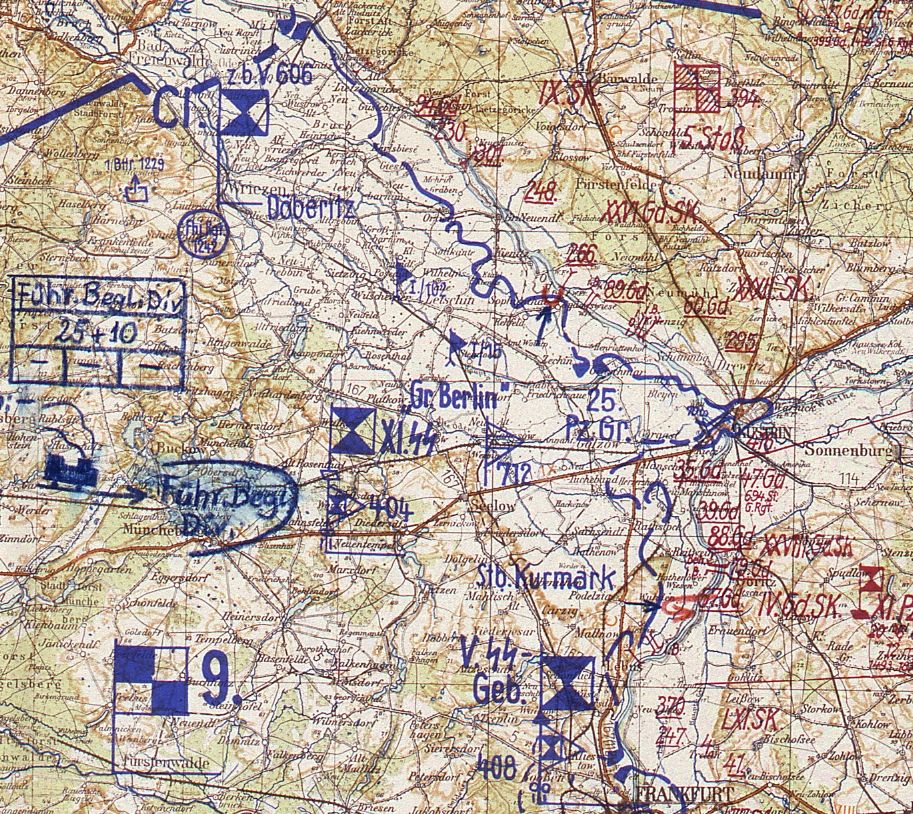
The German Operation Sonnenwende has petered out in the absence of Wenck's direction. It appears to have dented the Soviet lines somewhat, but nothing of any significance. Other than that it has convinced Stalin to use Zhukov's Front to clear Pomerania, and delay the drive across the Oder to Berlin.
Farther east, Rokossovsky's Front continues to gain ground. This advance is along a fairly broad front and is more steady than spectacular. It does not feature the use of armored formations to dash through gaps torn in the German line. It looks more like an American advance by U.S. 1st Army. This is probably due to weather conditions and being advanced away from supply dumps more than a strong German defense.
Priests and Other Civilians Slain by Laughing Japanese in Manila
Very, very, bad people.
At this point, the paper still calls the island “Iwo”. was the correct name “Iwo Jima” and we did’t know it yet?
Was Iwo Jima more of a symbolic than strategic key in the fight against Japan?
At the risk of grossly oversimplifying, I believe the island had major tactical value as an air base w/in fighter range of the Japanese home islands and as an emergency landing site for B-29's. It was also desirable to deny it to the Japanese as a base from which to harass American forces.
The same factors made it valuable to the Japanese. It also had great symbolic importance because it was considered sacred Japanese soil (or ash, anyway). It was part of the prefecture of Tokyo.
Yet another reason to shed no tears over the firebombing and atomic destruction of Japanese cities. It’s called “reaping the whirlwind.”
I didn't know that.
And yes, it is rather enjoyable seeing karma hit Japan.
Interesting. Thanks Homer.
Still curious if we added the “Jima” later because that is what the Asians called it (because every south-Asian island doesn’t end with “Jima”).
Eleanor Roosevelt
I pretty much agree with Homer. There were important strategic reasons to take the island, all of which had to do with the B-29 campaign:
1. Deny the Japanese a base to mount attacks on our strategic airfields in the Marianas;
2. Deny the Japanese a forward base that would provide early warning of B-29 raids.
3. Provide an emergency landing strip for damaged B-29s returning from the Empire;
4. Provide a base for fighter escorts for the bombers.
However, the ferocity of the land combat was something of an order not seen since Verdun. From that it became symbolic of American determination to take an objective against the bitterest resistance. The flip side was it symbolized the cost we thought we would bear in an invasion of the Home Islands, but on a much larger scale.
Disclaimer: Opinions posted on Free Republic are those of the individual posters and do not necessarily represent the opinion of Free Republic or its management. All materials posted herein are protected by copyright law and the exemption for fair use of copyrighted works.